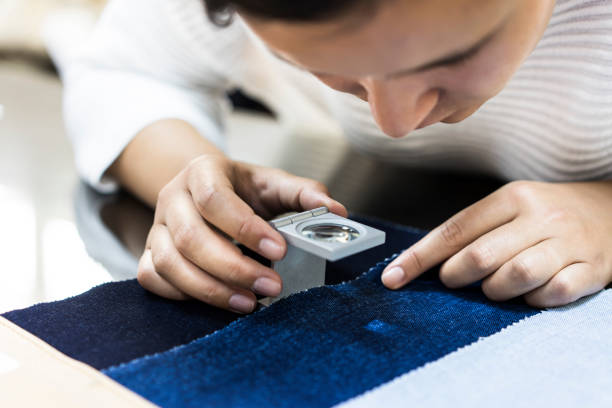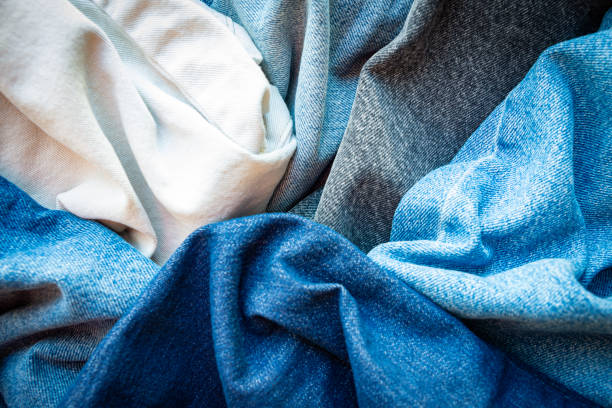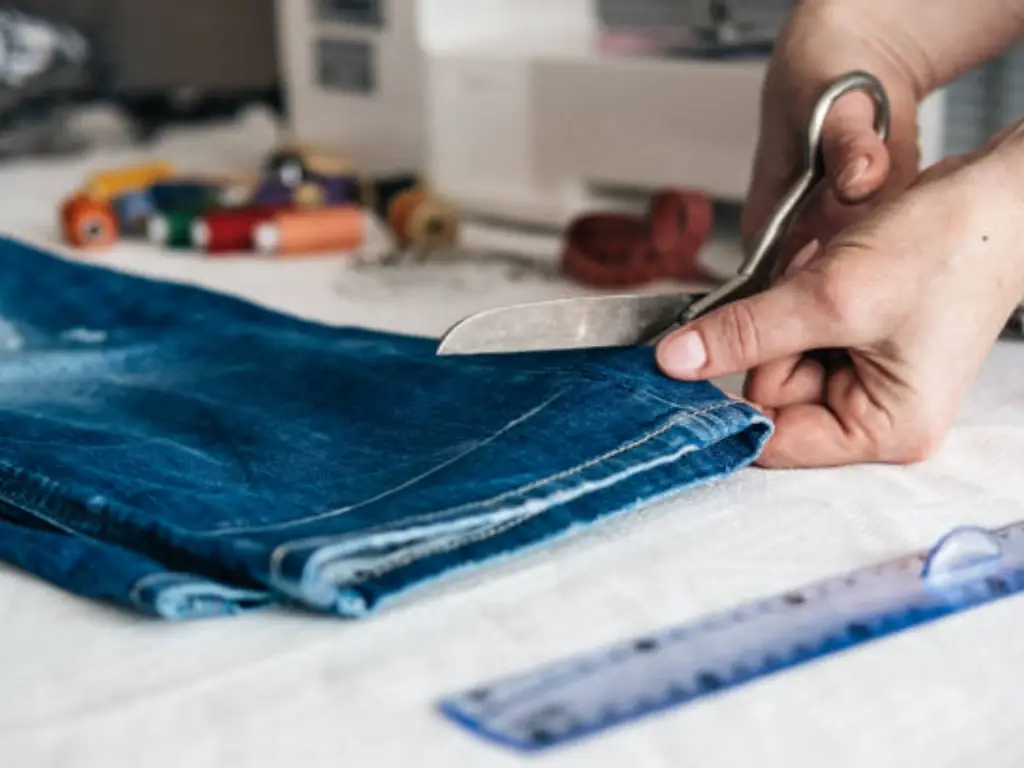Creating jeans that look like they’ve been loved for years—authentic, vintage, and full of character—is every denim brand’s goal. But getting that perfect fade? It’s not always as straightforward as it seems, especially if you haven’t seen the process in action.
In this guide, we reveal the real techniques behind those sought-after fades, from hand-sanding to cutting-edge laser finishing. You’ll learn how to bring your vision to life with consistent, high-quality results that elevate your denim collection.
A Quick Checklist: Tools & Materials Needed
Before you start creating those beautiful fades, let’s make sure you’ve got everything lined up. Think of this as your prep checklist—having the right tools on hand means you can work confidently and get consistent results every time.
| Tool/Material | Purpose | Notes |
|---|---|---|
| Sandpaper/Pumice Stone | Create hand-sanded fades and whiskers that mimic natural wear patterns | Use fine-to-medium grit for best results. Coarse grit can damage the fabric too quickly. |
| Potassium Permanganate (PP) Spray | Highlight denim for whiskers and fade effects with precision control | Handle with care and always use protective gloves. This chemical is potent and can stain skin. |
| Washing Machine and Stones | Stone wash process for overall aged look and soft hand feel | Ensure water temperature control to prevent unwanted shrinkage or color loss. |
| Laser Finishing Equipment | Modern, precise fading with sustainable benefits and repeatable patterns | Requires specialized professional setup. Great for scaling production with consistent results. |
| Protective Gear | Safety during chemical or mechanical treatments | Includes gloves, masks, and eye protection. Never skip safety when working with chemicals or abrasives. |
| Raw or Selvedge Denim Jeans | Base fabric for fading that shows authentic wear patterns | Higher quality denim shows more dramatic and personalized fades over time. |
Technique 1: Hand-Sanding to Create Whiskers and Fades
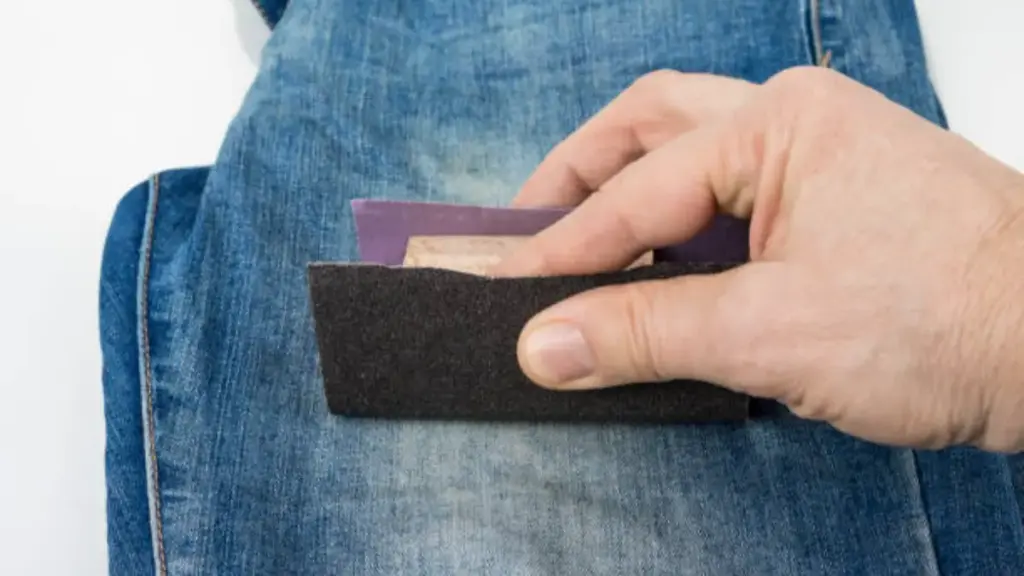
The Process of Hand-Sanding Denim
When creating authentic fade patterns, the first step is to identify the areas where jeans naturally wear over time. Focus on key zones like your thighs, knees, and the area behind the pockets. These high-wear areas are where whisker lines and fades will form naturally.
Then, grab sandpaper or a pumice stone. Apply it to the denim with light, consistent strokes to mimic the gradual breakdown of fabric over time. Think of it like painting—a gentle, controlled approach helps you build up the effect slowly and accurately.
Tips for Successful Hand-Sanding
- Start Light and Build Gradually: Avoid going too aggressive too quickly. Over-sanding can weaken the denim and lead to unintended holes. Start with light pressure and gradually build the fade, checking your progress frequently.
- Work in Layers: The secret to achieving authentic fades lies in layering. Sand lightly at first, assess the fade, and then add more sanding where necessary. This will help you control the intensity and ensure the denim remains durable throughout the process.
- Take Your Time: Creating realistic fade patterns takes patience. Don’t rush the process. The more time you spend carefully working through each area, the better the final result will look.
Technique 2: Applying PP Spray for Highlighted Fades
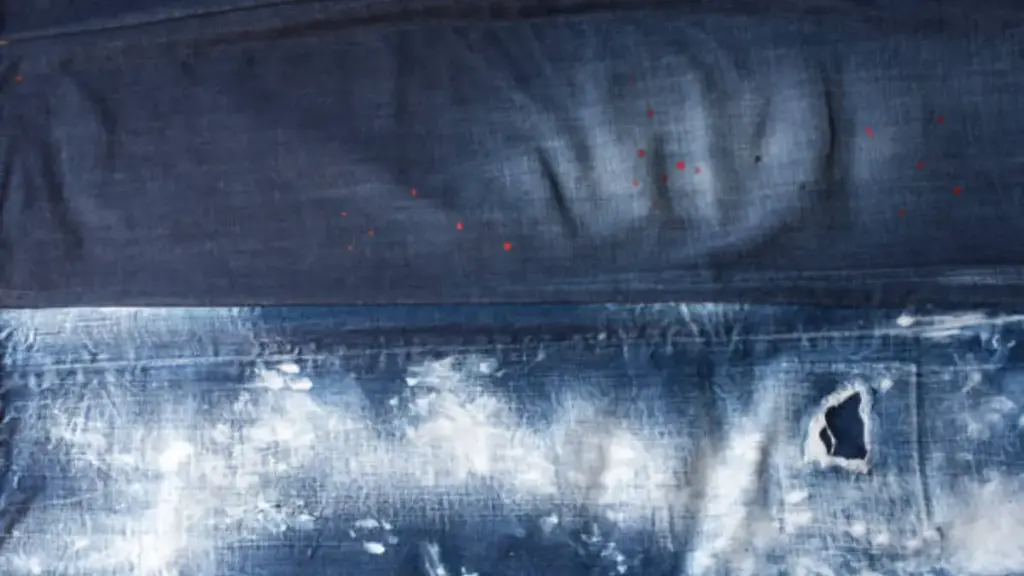
You’ve mapped out your fade zones and prepped your denim. Now it’s time to bring in one of the most powerful tools in a wash technician’s arsenal: potassium permanganate (PP) spray.
This chemical creates those deep, oxidized tones that make vintage jeans look like they’ve lived a full life. But here’s the thing—PP spray isn’t forgiving. You need to know exactly where you’re spraying and why.
The Process of Applying PP Spray
PP spray works by oxidizing the indigo dye, darkening areas that naturally wear over time. Think of it as adding shadows to your denim, highlighting whiskers, knee breaks, and pocket edges. The key is control. If you over-apply, you’ll end up with harsh, unnatural-looking marks. Apply too lightly, and the effect may disappear after the first wash.
Start with a diluted solution and test on scrap denim to get a feel for the spray. Use light passes, gradually building up intensity. Let each layer dry fully before deciding if more is needed. The real magic happens when you combine PP spray with light sanding—this layering technique creates a realistic fade depth that adds authenticity and visual interest.
Drying time matters just as much as application. Rush it and you’ll get uneven oxidation. Give the PP at least 30 minutes to fully react with the denim before rinsing. And always neutralize with a mild acid wash afterward to stop the chemical process and lock in your fade pattern.
Technique 3: Stone Washing for Full-Body Aged Look
Stone washing is where you’ll see the magic of controlled chaos come to life. Start by placing the denim in an industrial washer and adding pumice stones. These stones act as natural abrasives, gently breaking down the indigo dye and softening the cotton fibers. The stones’ friction with the fabric creates the worn-in, vintage look that is characteristic of stone washing.
The key to stone washing is timing. If the wash cycle is too short, the fade will be too light; if it’s too long, the fabric may become damaged. Skilled technicians monitor the wash, checking the fade intensity every 15-20 minutes. The goal is to achieve a consistent vintage look without compromising the denim’s durability. Always check the denim throughout the cycle to prevent over-washing.
After reaching the desired fade, the next step is thorough rinsing. This ensures that all pumice residue and excess indigo dye are removed. Multiple rinse cycles with progressively cooler water are necessary to prevent leftover pumice from weakening the fabric. Be sure to completely rinse out all pumice particles to preserve the denim’s integrity.
Tailored Denim Solutions for Your Brand
Partner with Changhong Garment to create custom denim crafted to your exact specifications. Benefit from low minimum orders, sustainable fabrics, and a complete in-house production process designed to bring your unique style to life with consistent quality and fast market delivery.

Technique 4: Laser Finishing for Precision Fading
Laser finishing represents a breakthrough in denim production, allowing you to create precise fade patterns that would normally take years of natural wear in just a few minutes. Think of it as a digital paintbrush that replicates every whisker, crease, and subtle variation found on perfectly aged jeans.
The Process of Laser Fading
The laser fading process begins with creating a precise digital design using specialized software. Designers map out detailed fade patterns, such as whiskers, honeycombs, and knee breaks, programmed down to the millimeter. Once the design is ready, it is uploaded to a laser machine. The denim is placed inside, and the laser is calibrated to the right intensity based on the required fade effect. The laser then etches the pattern into the fabric, precisely removing the indigo dye in specific areas to replicate natural wear.
After the fading process, the denim undergoes additional treatments like washing to remove any residue, softening, or further distressing. The result is denim that closely mimics years of wear with exceptional detail, consistency, and precision.
Benefits of Laser Fading
Precision and Consistency: Laser technology ensures detailed, accurate fading, with identical results across thousands of pairs. This consistency is vital for brand control.
Speed: What once required multiple steps, such as washing and manual distressing, is now completed in a single session, significantly reducing production time.
Sustainability: Laser fading cuts water usage by up to 90%, eliminating harsh chemicals and making it a more eco-friendly alternative to traditional methods.
Enhanced Detail: Laser technology allows intricate fade patterns that are difficult to achieve manually, providing a level of detail beyond the capabilities of sandpaper or stone washing.
Cost Efficiency: Faster production and reduced material waste help lower manufacturing costs, making laser fading a cost-effective solution for large-scale production.
Fade vs. Wash: Key Differences Explained
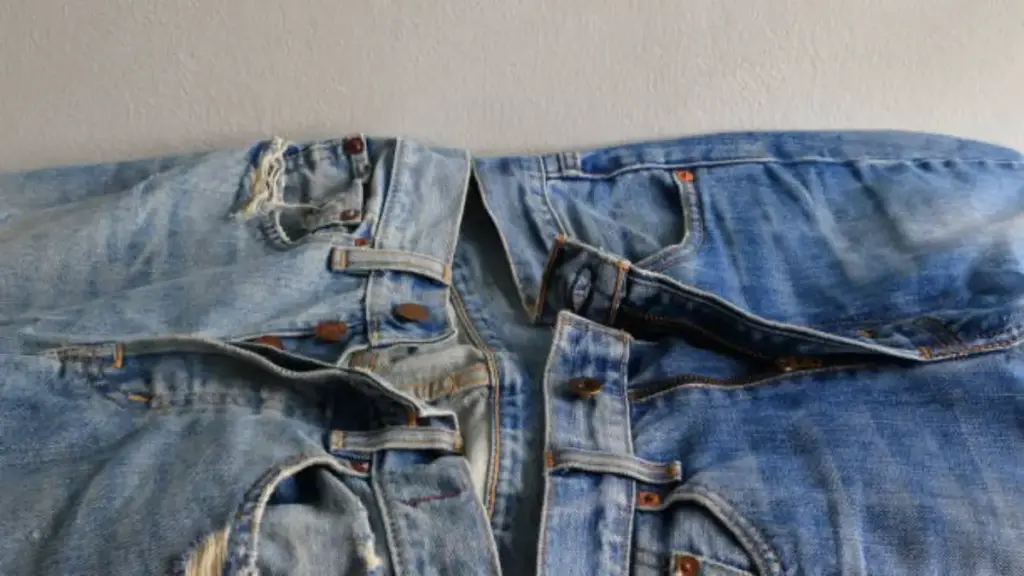
Fading targets specific high-wear zones on your jeans. Think about those natural whiskers around the thighs, the honeycomb patterns behind the knees, or the lightened areas where a wallet sits. These aren’t random—they’re deliberate replicas of how authentic wear affects denim over months or years. Techniques like laser finishing and careful distressing let you create these focal points without waiting for real-life wear.
Washing, on the other hand, treats the entire garment uniformly. When you run a stone wash or enzyme treatment, you’re softening the fabric and lightening the color across every inch of the jean. The result is consistent, predictable, and often more commercial-friendly. These processes fall under the category of denim washes, which provide different textures and looks depending on the technique used.
Choosing Between Fading and Washing
- Fading gives you that coveted vintage authenticity and visual interest—perfect if you’re targeting denim enthusiasts who appreciate craftsmanship. Fades add personality and uniqueness, making each pair of jeans feel truly one-of-a-kind.
- Washing offers reliability and a softer hand feel right out of the gate, which appeals to customers seeking immediate comfort. The uniform look makes it easier to produce large quantities without variation, making it ideal for mass production.
Common Mistakes and How to Avoid Them
Getting great fades takes more than just good intentions. Learning what trips up most people—and how to sidestep those pitfalls—makes all the difference between jeans that look incredible and ones that fall apart too fast.
| Common Mistake | Solution/How to Avoid |
|---|---|
| Over-sanding causing fabric thinning | Use moderate pressure when distressing, and always test on a scrap piece of denim first. Watch for weak spots as you work, and pull back if the fibers start to separate or tear. Your goal is surface wear, not holes. |
| Excessive chemical use damaging fibers | Follow the recommended spray concentration for any chemical agent you’re using, and limit exposure time. More product and longer contact don’t equal better results—they just weaken the denim. Always rinse thoroughly to stop the fading process. |
| Uneven stone washing leading to patchy fades | Control your wash time and the amount of stone you’re using. Check your progress regularly during the process, and adjust as needed. Consistency matters—rotating the jeans and keeping stones distributed evenly prevents blotchy results. |
| Ignoring sustainability causing environmental harm | Choose eco-friendly methods like laser finishing and natural fading agents (salt, lemon juice, baking soda) whenever possible. These methods deliver beautiful results while respecting both the garment and the environment. Your customers will appreciate the responsibility. |
Frequently Asked Questions About Fading Jeans
How are ‘whiskers’ (the lines on the lap) created in a factory?
Factory whiskers are created using laser finishing or hand-sanding techniques that mimic natural wear patterns. Technicians study how denim naturally creases at the hips and thighs, then replicate those exact fade lines using specialized tools or computer-controlled lasers.
What is the most sustainable way to create a faded look?
Natural wear combined with sun exposure is the most sustainable method—it requires no chemicals or water. If you need faster results, soaking jeans in saltwater or applying lemon juice before sunning offers eco-friendly fading without harming the environment.
Can you replicate a specific vintage fade from a photograph?
Yes, professional services using laser technology can replicate specific fade patterns from reference photos with remarkable precision. You’ll need high-quality images showing the fade details, and the process works best on raw or dark denim.
What is the difference between a fade and a wash?
A fade is the gradual lightening of denim through wear and friction, creating unique patterns based on body movement. A wash is a factory treatment applied uniformly to the entire garment using chemicals, enzymes, or stones before it reaches you.
How does the fading process affect the fabric’s durability?
Natural fading through wear actually strengthens the bond between you and your jeans without compromising fabric integrity. Chemical methods like bleaching can weaken fibers significantly, while mechanical abrasion may thin the fabric in targeted areas.
Mastering the Art of Authentic Denim Fading
Achieving the perfect worn-in look isn’t simply about following steps; it requires a deep understanding of how natural wear patterns develop and applying that insight throughout your production process. Whether it’s through hand sanding, chemical sprays, stone washing, or laser finishing, each technique gives you control over your brand’s aesthetic, allowing you to create denim that tells a true story of craftsmanship.
Ready to elevate your denim collection? Partner with Changhong, where traditional techniques meet modern efficiency. Let us help you create authentic, high-quality denim jeans that resonates with your customers and meets your brand’s standards.



